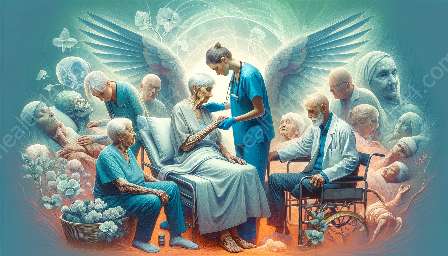Introduction
As individuals age, their needs and challenges change, especially when it comes to maintaining independence and safety within their own homes. Smart home technology has emerged as a promising solution to support aging in place and prevent falls among older adults. This cluster will explore the ways in which smart home technology contributes to aging in place and fall prevention, with a focus on its compatibility with gerontechnology and geriatrics.
Understanding Aging in Place
Aging in place refers to the ability of individuals to live in their own homes and communities safely, independently, and comfortably, regardless of age, income, or ability level. It emphasizes the importance of providing the necessary support and resources for older adults to remain in their preferred living environments for as long as possible. With the advancements in smart home technology, aging in place has become more achievable and sustainable for many seniors.
The Role of Smart Home Technology
Smart home technology encompasses a wide range of interconnected devices and systems that are designed to automate and enhance various aspects of home life. These technologies integrate sensors, cameras, voice recognition, and sophisticated software to create a network of devices that can be remotely monitored and controlled. When applied to aging in place, smart home technology offers several key benefits that contribute to the well-being and safety of older adults:
1. Environmental Monitoring
Smart home technology can monitor the living environment for potential hazards and changes in the daily routines of older adults. For example, motion sensors and cameras can detect unusual activities or periods of inactivity, alerting caregivers or family members to check on the well-being of the individual. Temperature and humidity sensors can also ensure that the home environment remains comfortable and safe for the elderly.
2. Fall Detection and Prevention
One of the most critical aspects of aging in place is fall prevention. Smart home technology offers fall detection systems that utilize motion sensors and algorithms to identify falls or abnormal movements. When a fall is detected, the system can automatically send alerts to emergency contacts or medical services, enabling swift responses to potential injuries.
3. Medication Management
Many older adults require complex medication regimens, making medication management a crucial aspect of their health maintenance. Smart home technology can assist in organizing, reminding, and tracking medication schedules to ensure adherence and minimize the risk of medication-related complications.
4. Home Automation and Assistance
Smart home devices, such as voice-controlled assistants and automated lighting, provide convenience and assistance to older adults with mobility or cognitive limitations. These technologies enable hands-free control of various home functions and can enhance accessibility and independence within the living space.
Compatibility with Gerontechnology
Gerontechnology refers to the interdisciplinary field that focuses on developing technological solutions to address the challenges and opportunities associated with aging. Smart home technology aligns closely with the principles and objectives of gerontechnology by providing innovative tools and strategies to support the aging population. The integration of smart home devices with gerontechnology initiatives can amplify the impact of interventions aimed at promoting successful aging in place.
Impact on Geriatrics
Geriatrics encompasses the medical care and treatment of elderly individuals, emphasizing the unique healthcare needs and conditions prevalent in older populations. Smart home technology complements geriatrics by offering valuable data and insights into the daily activities and health status of older adults. This technology facilitates remote monitoring and assessment, contributing to more personalized and proactive geriatric care.
Conclusion
The utilization of smart home technology significantly contributes to promoting aging in place and preventing falls among older adults. By harnessing the capabilities of smart devices and systems, older individuals can maintain their autonomy and security within their homes while receiving timely assistance and support. The synergy between smart home technology, gerontechnology, and geriatrics underscores the potential for comprehensive and holistic approaches to addressing the needs of aging populations.


